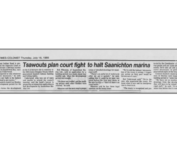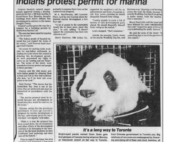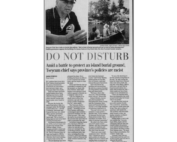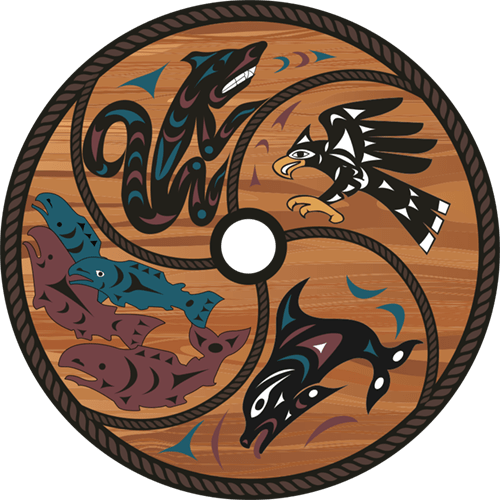Reestablishing & Documenting Traditional Protocols
The Key To Asserting Title & Rights In Shared & Overlapping Territories
The WLC is exploring ways to reduce vulnerabilities when advocating for rights and title through reestablishing & documenting cultural protocols for shared and overlapping territories.

How are shared and overlapping territories a vulnerability?
Because the rights and usage of shared and overlapping territories do not fit within the rigid colonial notions of land ownership, Indigenous title and rights claims have often been dismissed for lack of “proof” or clear “ownership”. Shared and overlapping territory has been used as justification for failing to return land or rights to Indigenous communities.
As such, rather than cultural values in action, shared and overlapping territories have for years become a legal loophole colonial bodies have leveraged in order to continue extraction and intrusion activities.
Due the ongoing colonial harm being caused within shared and overlapping territories, many Indigenous organizations in BC – including the WLC – are exploring ways to reestablish and document the traditional protocols for shared and overlapping territory. Documentation of this type has been incredibly valuable in advocating for rights and title.
What are shared and overlapping territories?
To accurately discuss these concepts it’s important to first define them.
Territory is generally defined as a land and aquatic area used by a first nations group that shares the same linguistic features.
Shared territory is a land and aquatic area shared by those who have the same interests in the territories.
Overlapping territory is where two different linguistic groups have interest in the resources associated with the land and aquatic area.
Rights and access to territories are further complicated by family holdings and kinships which give people certain rights within territories they would not otherwise have rights to. Carried through the family name, or hereditary rights, locations and access to the resources inherent to the location were respected in addition to the notions of territory.
The Indian Act, based on colonial notions of land ownership, assigned territories to band offices instead of based on inherent rights due to linguistic or familial associations, which has caused further division and harm among communities and nations.

View from the Malahat, a sacred mountain the W̱SÁNEĆ and considered shared territory.
The Complexities of Shared and Overlapping Territory
Through colonization, western concepts of land, rights and ownership have been applied to W̱SÁNEĆ, and surrounding territory. Because the colonial concepts of land ownership have been given more legitimacy than Indigenous land ownership, western governments both make decisions regarding land use and benefit economically from land based resources.
Indigenous land ownership was not based on lines drawn on a map, it was a reciprocal relationship, where the responsibility to care and manage the land provided benefits through an abundance of sustainable resources. Today, governments struggle to understand how to apply this and often use the complexity of shared and overlapping territory as justification for the continuation of colonial management of land. Colonial governments encourage First Nations to draw lines on a map, further embedding colonial land ownership into our communities and drawing our communities away from our traditional ways of land ownership and creating divisions that are difficult for our communities to overcome.
Historically, protocols were used to maintain relationships and resolve conflicts over shared use of harvesting areas. These protocols have been weakened by colonial agreements that provide recognition and benefit agreements to one Community and not to another. Refusing Indigenous Title and Rights claims based on suggestions that more than one Nation/Community may have title and rights to the land. Indian Act Bands then strive for recognition, power and control of their individual community, further displacing First Nations ways of being.
A further obstacle is that the colonial process relies on formal rules, demanding strict proof of historical ‘ownership’. Situations in which there was shared use due to kinship ties, use during travel and incidental use, become more complicated and difficult to implement when there is one Nation that is staking claim and making agreements with the colonial government. Because of this, exercising rights over shared and overlapping territory can pit our communities against each other and can require a lot of time, money, and other valuable resources to overcome.
“While reestablishing and documenting our protocols to managing shared and overlapping territory is complex, it’s a path we must walk down in order to fully assert W̱SÁNEĆ rights and title and defend our communities from unchecked colonial activity in our territory” shares Gord Elliott, Director of Operations.
In spite of the historical difficulties, many Indigenous communities in British Columbia have successfully challenged the government’s claims on shared land. Four approaches, in particular, have been effective when negotiating shared territory and overlaps.
Four approaches to advocate for shared & overlapping territory rights and title
Indigenous Institutions Aid in Documenting Protocol
To aid in the critical work that first nations are doing regarding their title and rights on shared territory, first nations institutions are being created that can offer support and legal recourse. This has long been identified as an area of need by First Nations in BC and are in high demand. The Truth and Reconciliation Commission Report and the United Nations Declaration have stated the importance of Indigenous institutions helping with this work.
Many BC Chiefs have come together through forums and organizations to discuss shared lands and titles. Indigenous organizations, such as, the Union of BC Indian Chiefs (UBCIC), the First Nations Summit (FNS) and the BC Assembly of First Nations (BCAFN) have hosted meetings to listen to leaderships concerns on this topic and to help in the creation of goals and resolutions that would help communities address shared territories and overlaps.
Members from the UBCIC, FNS, and BCAFN have also formed the First Nations Leadership Council (FNLC). FNLC has also hosted forums to discuss the issues related to shared territories and overlap.The FNLC brings BC Chiefs and Councillors, hereditary and traditional leadership, technicians and experts together to create solutions-oriented, strategic dialogue. This work is rooted in the principles of self-determination, the right of self-government and the removal of colonial governments in these discussions. Through the resolutions made in these groups, it is evident that Indigenous institutions, that are external to band level governance, can aid with the process of decolonization.
First Nations Legal Order Approaches
First Nations Legal Order can be understood as a legal system that includes First Nations laws, values, customs, ceremonies, and other important aspects of culture into its practice of regulation, recognition, and protection of First Nations lands, waters, and citizens.
This Legal Order can operate within the colonial legal system and better serve the interests of First Nations that are seeking to implement rights to decision making and title over land. However, this work involves the rebuilding and clear articulation of the many different customs and norms for dispute resolution that have been used by Indigenous groups. Documenting these intertribal protocols and agreements for use within the First Nations Legal Order strengthens title and rights claims.
Internal Dispute Resolution
Another essential component of approaching issues related to shared territories and overlaps is to practice internal dispute resolution. Based in cultural protocol, these processes can help ensure a united front when taking on colonial bodies. Further, documenting dispute resolution techniques can aid in the use of the First Nations Legal Order.
United Nations Declaration on the Rights of Indigenous Peoples
The UN Declaration on the Rights of Indigenous People has brought global attention to the challenges associated with exercising Indigenous human rights and legal titles. In 2019, the BC government implemented Bill 41 which recognizes that BC law should be following the UN Declaration. Part of this includes recognition of Indigenous self-determined governing organizations.
Implementing this bill in legal disputes may provide an effective response to province-wide inaction in respecting rights and title on shared territories and overlaps.
While shared territories and overlaps have been an obstacle to obtaining title and rights over land, organization, collaboration, and the use of approaches such as First Nations Legal Order, Indigenous institutions, and other tools will help to make these cases more successful.
The work that is currently occurring on re-establishing and documenting intertribal protocols is integral to advancing the process of decolonization, and overcoming challenges over land titles and rights of shared territories and overlaps.










